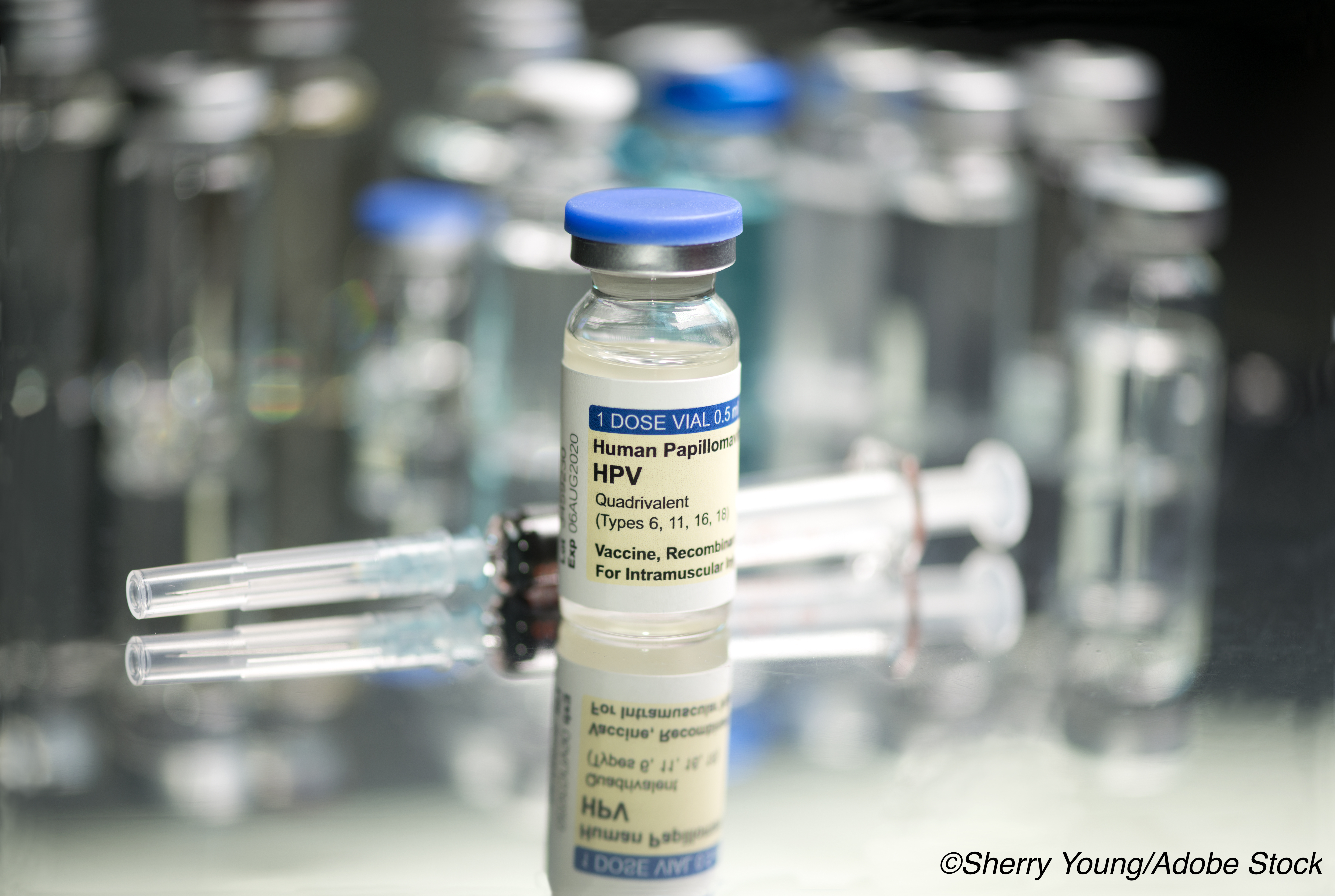Vaccination with the quadrivalent HPV vaccine significantly lowers the risk of developing invasive cervical cancer in women aged 10 to 30 years old, according to Swedish researchers, who published their results in The New England Journal of Medicine. In addition, greater risk reductions were associated with younger age at vaccination, with an 88% lower risk of cervical cancer in women who had been vaccinated before the age of 17 years compared with those who had not been vaccinated.
“Beginning in May 2007, HPV vaccination was subsidized for girls in Sweden who were 13 to 17 years of age. In 2012, Sweden introduced a free catch-up HPV vaccination program for girls and women 13 to 18 years of age and a school-based HPV vaccination program for girls 10 to 12 years of age. Currently, women 23 to 64 years of age are invited to participate in the population-based, organized cervical cancer screening program, which issues invitations every 3 to 7 years to women depending on their age,” explained researchers led by Jiayao Lei, PhD, of the Karolinska Institutet, Solna, Sweden.
Using data from Swedish demographic and health registries, Lei and colleagues conducted their population-based study, which included 1,672,983 girls and women age 10 to 30 years who were followed and evaluated for cervical cancer until the age of 31 years. A full 83.2% of these individuals were vaccinated before the age of 17 years.
Researchers searched for any associations between HPV vaccination and the risk of invasive cervical cancer, defining vaccination with the HPV vaccine as receiving at least one dose of the quadrivalent vaccine. After exclusions, a total of 1,046,466 women were included in the analyses, 518,319 who were vaccinated and 528,347 who were not.
In all, 19 women who had received the quadrivalent HPV vaccine were diagnosed with cervical cancer, compared with 538 women who had not received the vaccine, for corresponding cumulative incidences of 47 cases per 100,000 persons versus 94 cases per 100,000 persons, respectively.
Lei and fellow researchers also found that the cumulative incidence of cervical cancer increased rapidly at the age of 23 years among vaccinated and unvaccinated women. By 30 years of age, this increased significantly to 94 cases per 100,000 persons in women remained unvaccinated, compared with 47 cases per 100,000 persons among vaccinated women.
In those who were vaccinated between that ages of 17 and 30 years, the cumulative incidence by the age of 30 years was 54 cases per 100,000 persons. In contrast, the cumulative incidence of invasive cervical cancer in women vaccinated before the age of 17 years was 4 cases per 100,000 persons by the age of 28 years.
When researchers adjusted for age at follow-up, the incidence rate ratio of comparison between vaccinated and non-vaccinated women was 0.51 (95% CI: 0.32-0.82). Upon further adjustment for calendar year, as well as residential and parental characteristics, the incidence rate ratio was 0.37 (95% CI: 0.21-0.57) in women who were vaccinated. After stratification according to age at vaccination initiation, researchers found fully adjusted incidence rate ratios of 0.12 (95% CI: 0.00-0.34) in women vaccinated before age 17 years, compared with 0.47 (95% CI: 0.27-0.75) for those vaccinated between the ages of 17 and 30 years.
In women vaccinated before age 20 years, the fully adjusted incidence rate ratio was 0.36 (95% CI: 0.18-0.61), and 0.38 (95% CI: 0.12-0.72) in those vaccinated between 20 and 30 years of age.
In their sensitivity analysis, Lei and colleagues found no significant differences in risk reductions associated with HPV vaccination among birth cohorts but, upon using a 5-year buffer period, they found that the risk of cervical cancer among women receiving HPV vaccination was consistently lower compared with those who remained unvaccinated.
Study limitations include misclassification of a small number of vaccinated women as unvaccinated; possible confounding by other factors including general health status and lifestyle factors including smoking status, sexual activity, oral contraceptive use, and obesity, along with the small incidence of cervical cancer in vaccinated women.
“Although the efficacy and effectiveness of the HPV vaccination against HPV infection, genital warts, and high-grade cervical lesions (CIN2+ and CIN3+) have been established, our results extend this knowledge base by showing that quadrivalent HPV vaccination is also associated with a substantially reduced risk of invasive cervical cancer, which is the ultimate intent of HPV vaccination programs,” wrote Lei and fellow researchers. “The greater risk reduction associated with younger age at initiation of vaccination is consistent with previous findings that showed a lower risk of genital warts and high-grade cervical lesions with HPV vaccination.”
They concluded that their “results also support the recommendation to administer quadrivalent HPV vaccine before exposure to HPV infection to achieve the most substantial benefit, since vaccination has no therapeutic effect against preexisting HPV infection.”
-
In girls and women, quadrivalent HPV vaccination significantly lowers the risk of developing invasive cervical cancer, with the greatest benefit from vaccination before exposure to HPV infection.
-
In girls and women vaccinated before the age of 17 years, the quadrivalent HPV vaccine lowered the risk of invasive cervical cancer by 88% compared with those who were not vaccinated.
E.C. Meszaros, Contributing Writer, BreakingMED™
Supported by grants from the Swedish Foundation for Strategic Research, the Swedish Cancer Society, and the Swedish Research Council and by the China Scholarship Council.
Lei had no financial disclosures.
Cat ID: 120
Topic ID: 78,120,120,935,190,191,192,925



